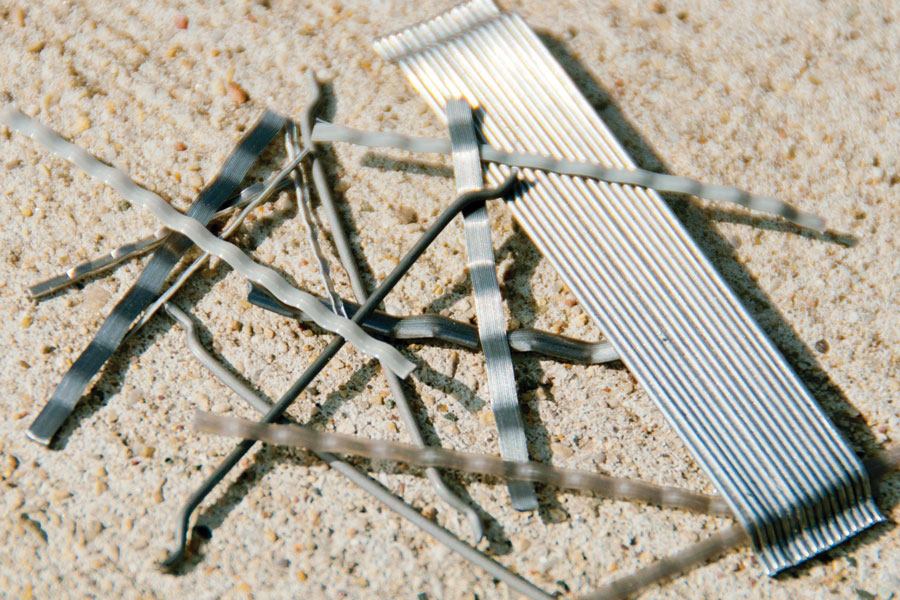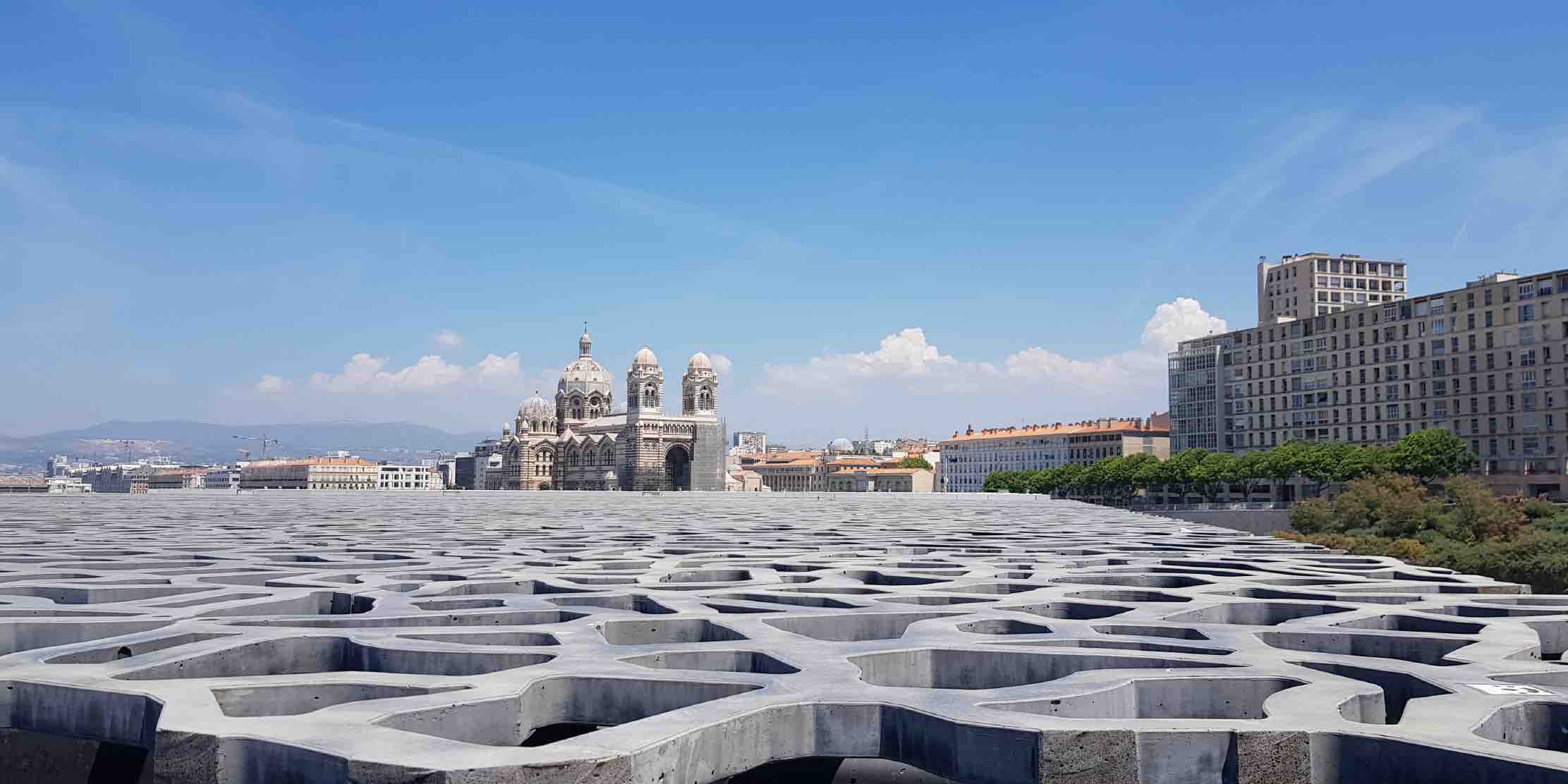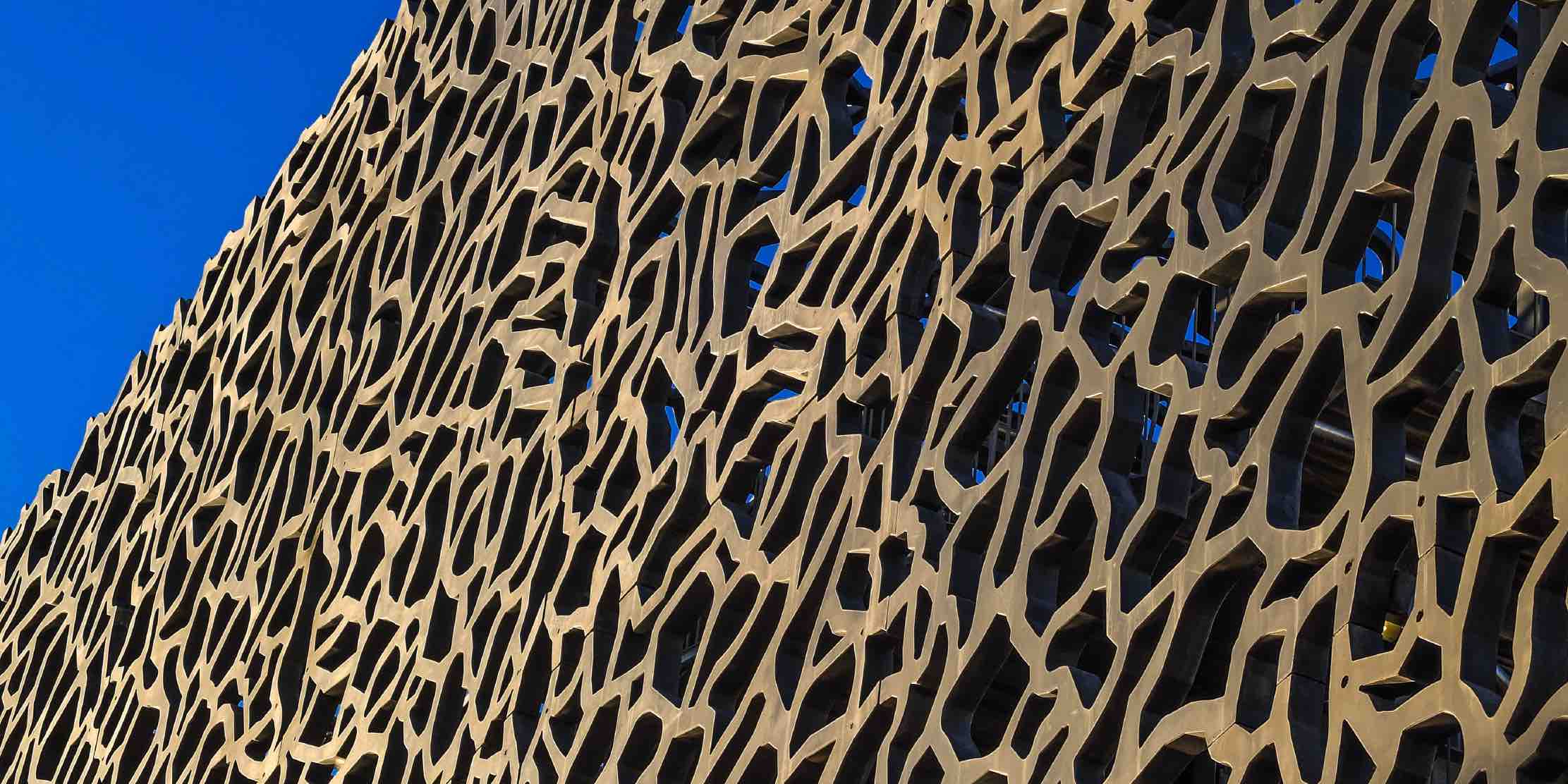Steel fibre reinforced concrete is becoming the preferred alternative to replace traditional mesh reinforced concrete. The reason is that fibres offer remarkable qualities that improve the floor’s mechanical behaviour.
Concrete is a very hard and durable material. However, it is also a brittle material, being especially weak under tensile or flexural forces, which is why it cracks and chips easily.
To overcome this problem, during the construction process, liquid concrete can be poured over steel bars to create a stronger structure which is more durable.
On the other hand, steel bars expand and contract with temperature changes, for this reason, the concrete should be placed ideally on slabs with expansion joints between them.
But what if you want a concrete floor without expansion joints? How do you get the same strength without using steel bars? The answer is steel fibre reinforced concrete (SFRC).
What is steel fibre concrete?
Steel fibre concrete is a type of reinforced concrete. It’s basically made up of cement, water, sand, gravel and steel fibres. In some cases additives are added.

Steel fibres are discontinuous and isotropic, short metal reinforcements similar to metal filaments or threads. These can be corrugated, wavy or smooth, with flat or shaped ends.
Are generally recycled from other industrial activities. A popular source of steel fibre is automobile and truck scrap tires.
The SFRC short strands (usually about 4 or 5 cm in length) are added to the concrete mix in a ratio of between 25 and 100 kg per cubic meter of concrete, depending on the degree of reinforcement required. The mixture is then poured directly on site.
The metal fibre reinforcements are distributed throughout the concretes volume, modifying its properties in all directions.
A concrete reinforced with steel fibres is mainly characterized by having a high resistance to compression, traction and flexion. At the same time, it has better ductility and therefore, less tendency to crack.
A disadvantage of SFRC is the probability that some fibers will protrude through the concrete surface. A solution to this is the addition of a “dry shake” treatment during the curing process.
Dry shake is a granular mixture of cement, ground aggregate, pigment, and surface hardener that is spread across the surface of the new concrete whilst curing. The concrete is then leveled to create a smooth surface.
Advantages and disadvantages of using concrete with steel fibres
Steel fibre reinforced concrete has replaced wire mesh concrete because it allows optimizing construction processes, reducing execution time and construction costs.

However, using concrete with steel fibres has advantages and disadvantages. To gain a better understanding of steel fibre reinforced concrete, we present the advantages and disadvantages of its use.
Advantages of steel fiber reinforced concrete
- The mechanical behaviour of the structure is the same in all directions thanks to the homogeneous distribution of the fibres.
- Increases surface resistance to abrasion and erosion.
- Increases durability, minimizing the appearance of cracks and fissures in concrete floors.
- Provides greater resistance to compression, traction, torsion, and shear force, meaning a greater loading capacity.
- Increases the persistence and ductility of traditional concrete.
- Greater resistance to impacts, explosions, dynamic and cyclic loads.
- It’s possible to combine with wire mesh, to create an even more resistant structural system.
- Enables saving materials by creating thinner and lighter structures.
- It allows to lay concrete floors up to 2500 m2 without joints and is, therefore, easier to maintain and clean.
- The floor slabs can be up to 50% thinner than conventional slabs, which means that the SFRC is significantly cheaper.
Disadvantages of steel fiber reinforced concrete
- Risk of the appearance of steel fibres on the structures surface.
- The appearance of fibres affects the aesthetics of the structure.
- An irregular mixing process of the concrete with the steel fibres can lead to the formation of balling fibres, reducing the material’s isotopic properties.
- The use of steel fibres eliminates the concrete’s docility.
- It’s crucial to accurately determine the type, amount and length of fibre that should be used.
When is it worth using concrete with steel fibres?
The evaluation of advantages and disadvantages of reinforced concrete with steel fibres clearly shows that it’s a beneficial material that is in consistency with its wide spectrum of application.

Among the uses of steel fibre concrete are:
- Prefabricated elements.
- Tunnel lining.
- Industrial flooring, military and commercial.
- Shotcrete.
- High resistance concrete.
- Lightweight concrete.
The industrial sector is one of the environments that has benefited the most from the steel fibre concrete performance. The construction of warehouses and storage areas with flooring (and walls) of reduced thickness offering large areas without joints.
In addition, industrial flooring with steel fibre are capable of withstanding the stresses and abrasion caused by the static and dynamic loads of industrial activity, minimizing the appearance of fissures, cracks and dust.
Steel fibre concrete flooring is recommended for industries with high traffic and heavy machinery.
How to make steel fibre reinforced concrete excellent?
We also recommend the use of the BECOSAN® System for this type of floor.
This system polishes the floor and removes any micro-roughness from the surface, increasing its resistance to wear by adding the BECOSAN® Densifier. Lastly, the floor is polished and treated with BECOSAN® Sealer to make it resistant to liquids.
The BECOSAN® treatment is one of the most outstanding treatments on the market. It uses a special formula that allows to densify and compact concrete floors, increasing its strength and improving its resistance and durability.
We offer concrete polishing services in the UK and Europe.
10 years dust proof guarantee. Unique BECOSAN® patent
